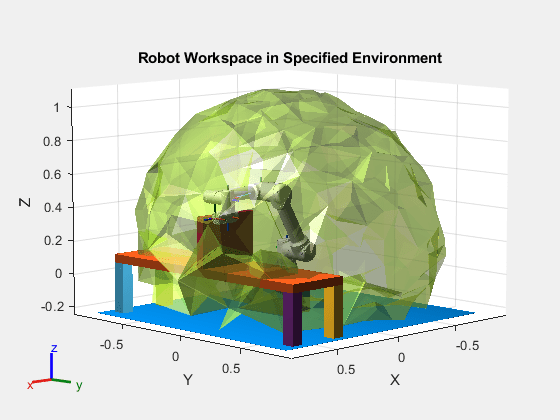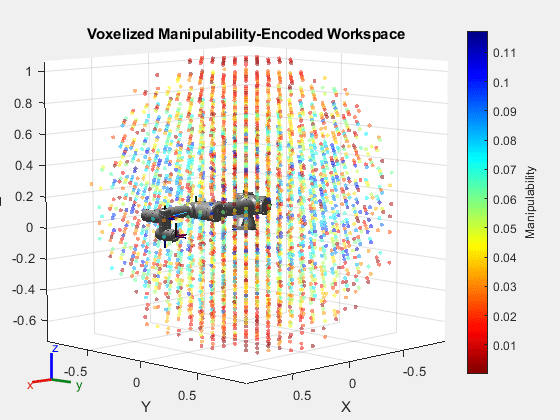generateRobotWorkspace
Syntax
Description
[
generates the reachable workspace, as end-effector coordinates and their corresponding joint
configurations, for a specified robot in the specified environment. This syntax uses the
last rigid body in the robot model as the end effector.workspace,configs] = generateRobotWorkspace(robot,environment)
[
specifies the rigid body to use as the end effector.workspace,configs] = generateRobotWorkspace(robot,environment,eeName)
[___] = generateRobotWorkspace(___,
specifies options using one or more name-value arguments in addition to any combination of
arguments from previous syntaxes. For example, Name=Value)MaxNumSamples=1500 sets
the maximum number of configurations to sample to 1500.
Examples
Input Arguments
Name-Value Arguments
Output Arguments
Extended Capabilities
Version History
Introduced in R2024b

